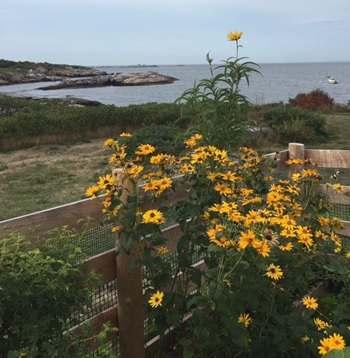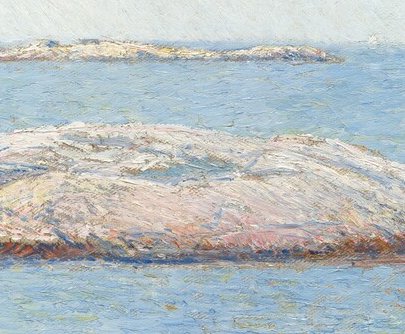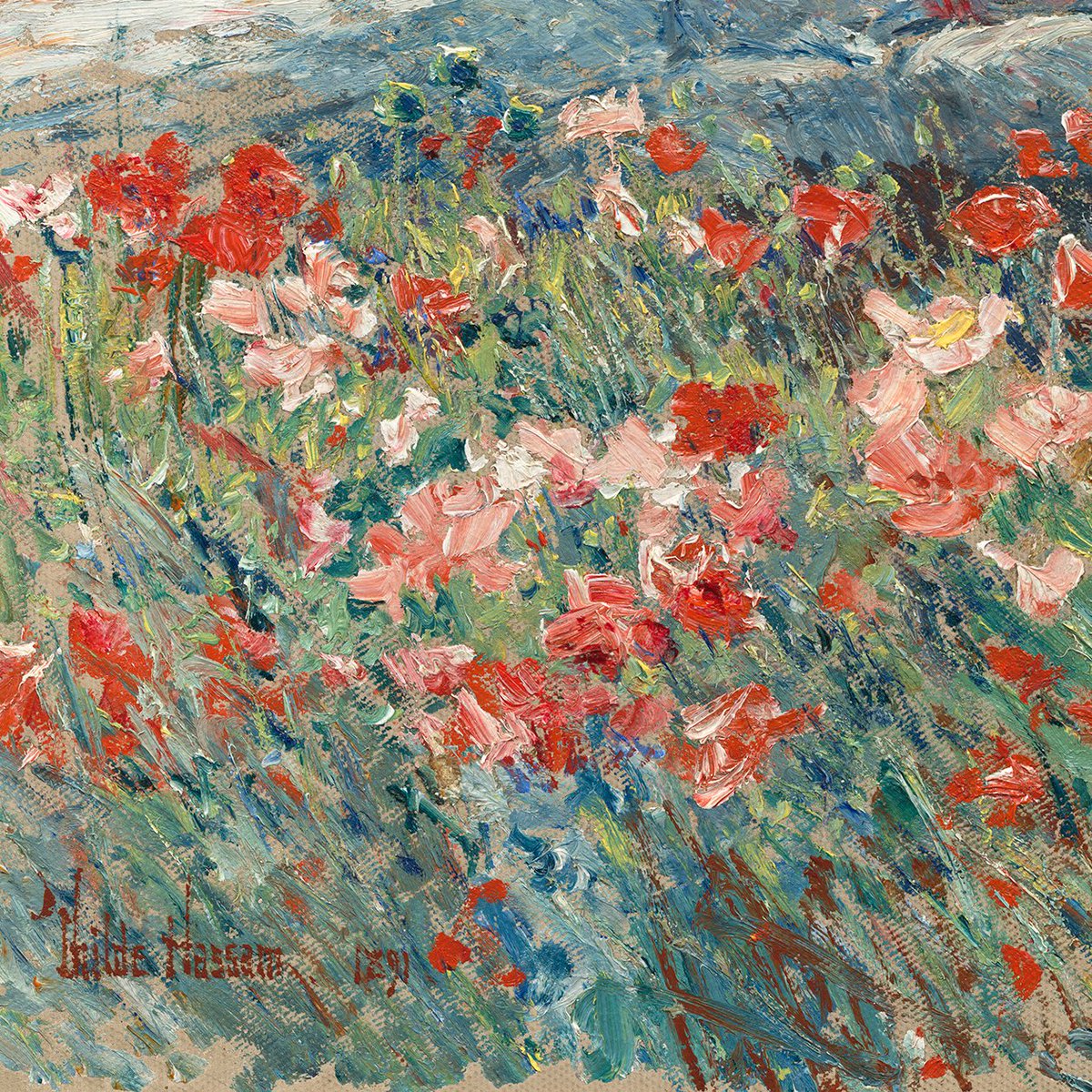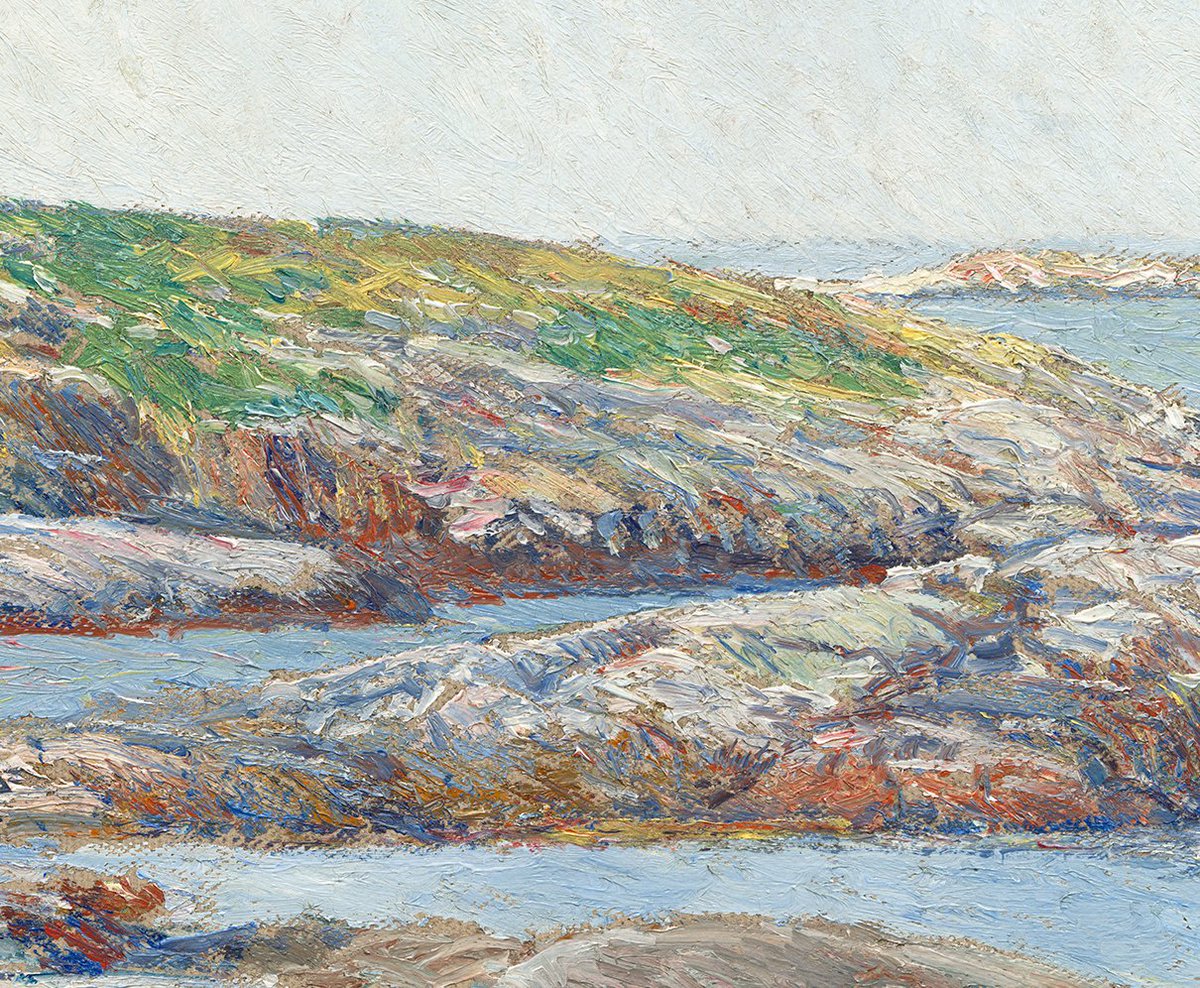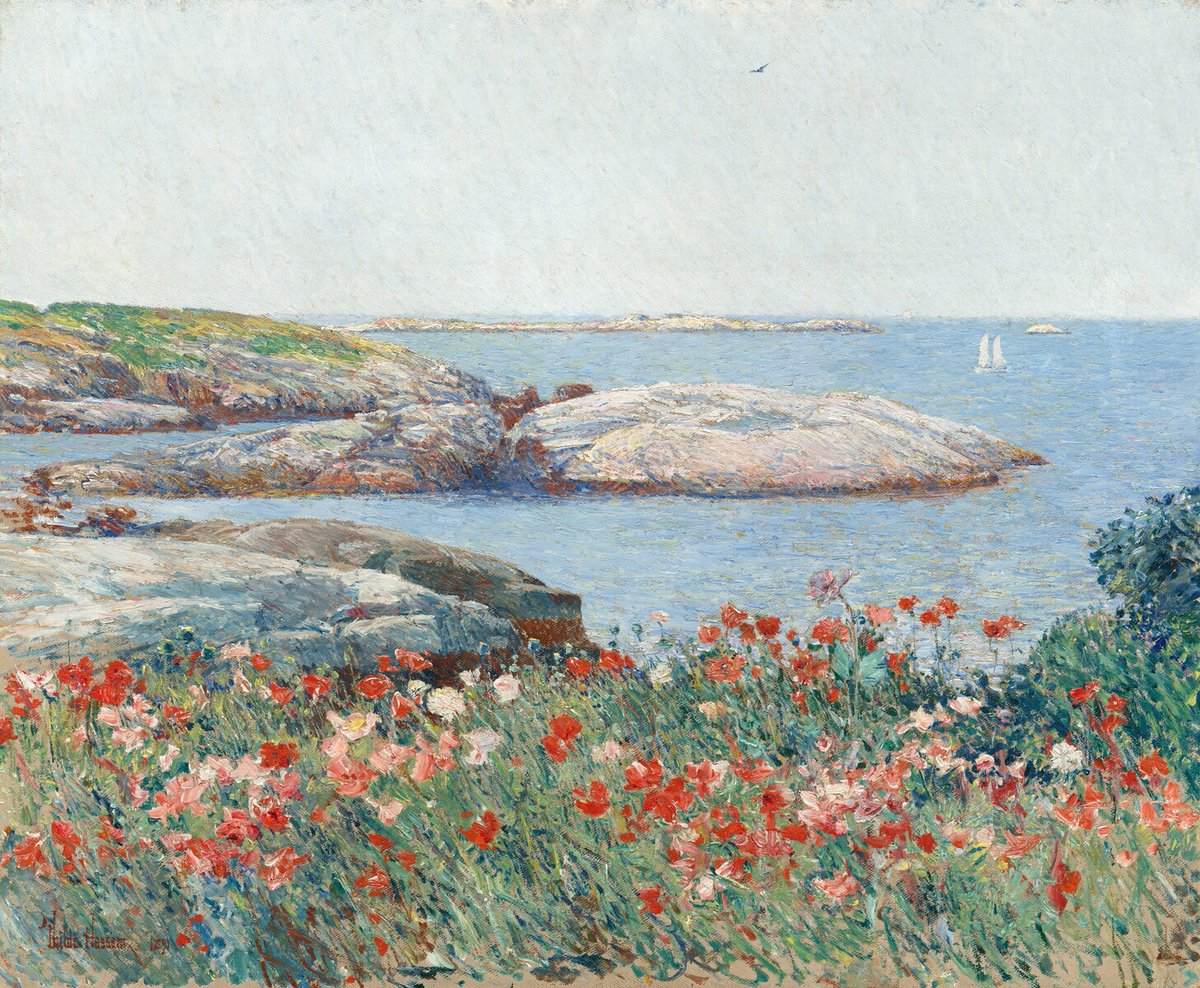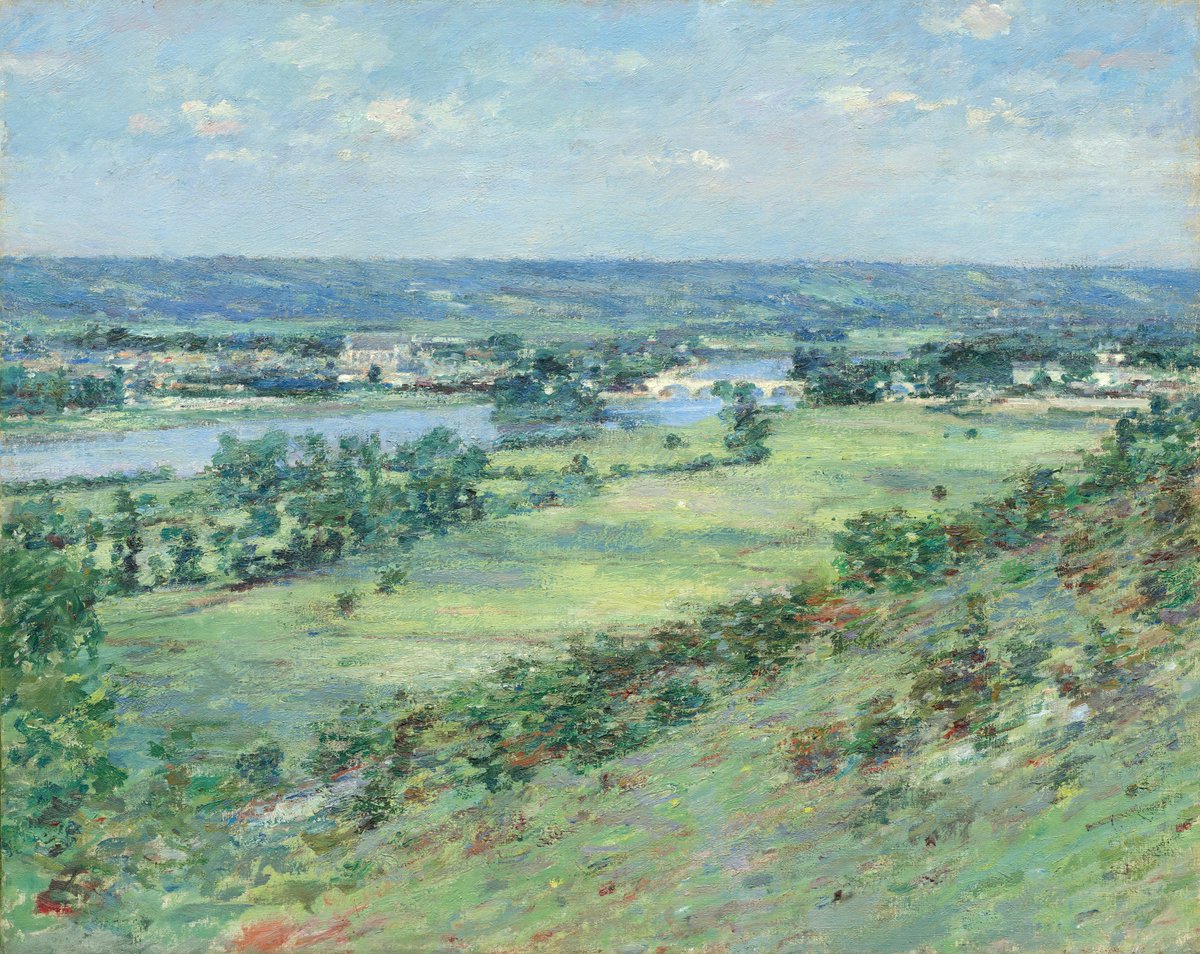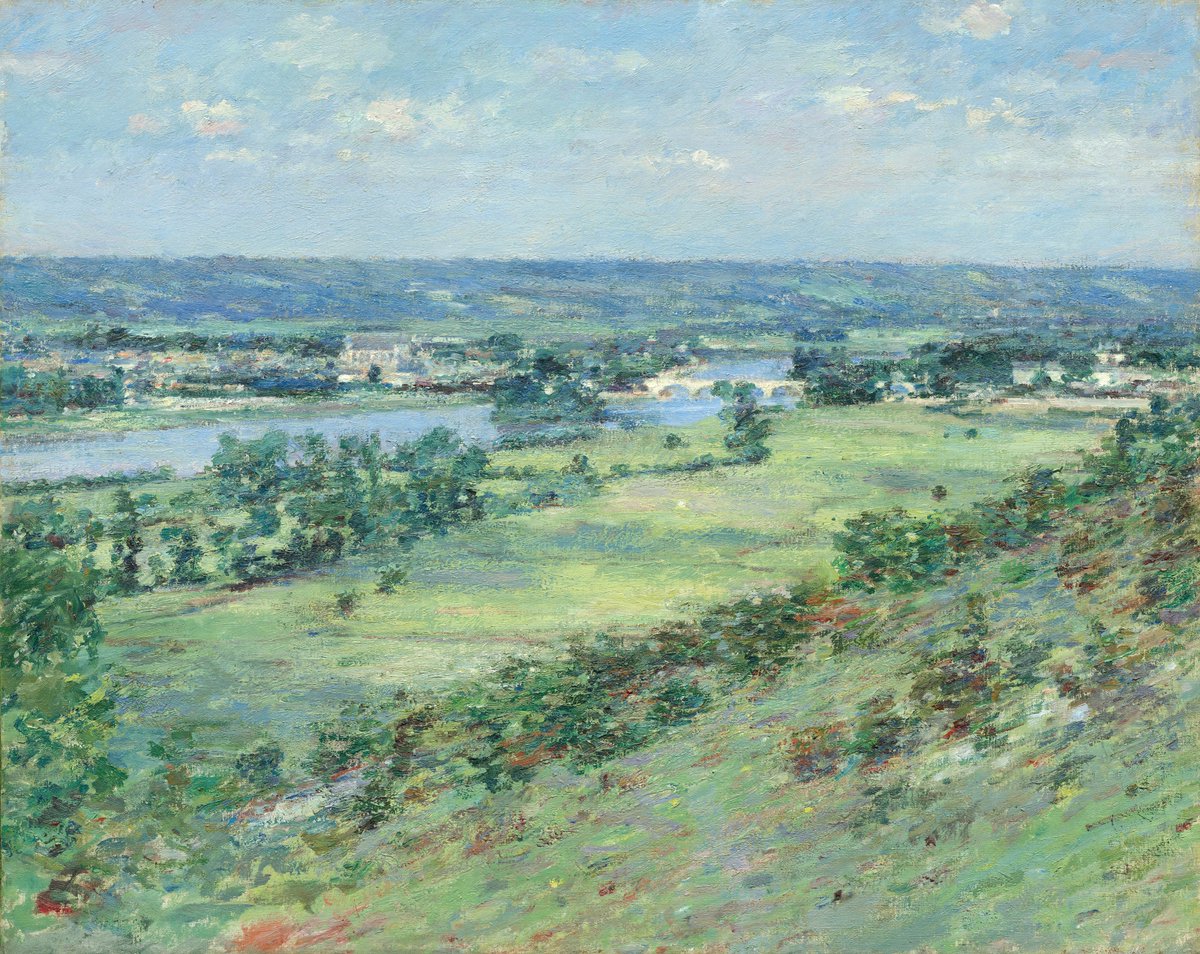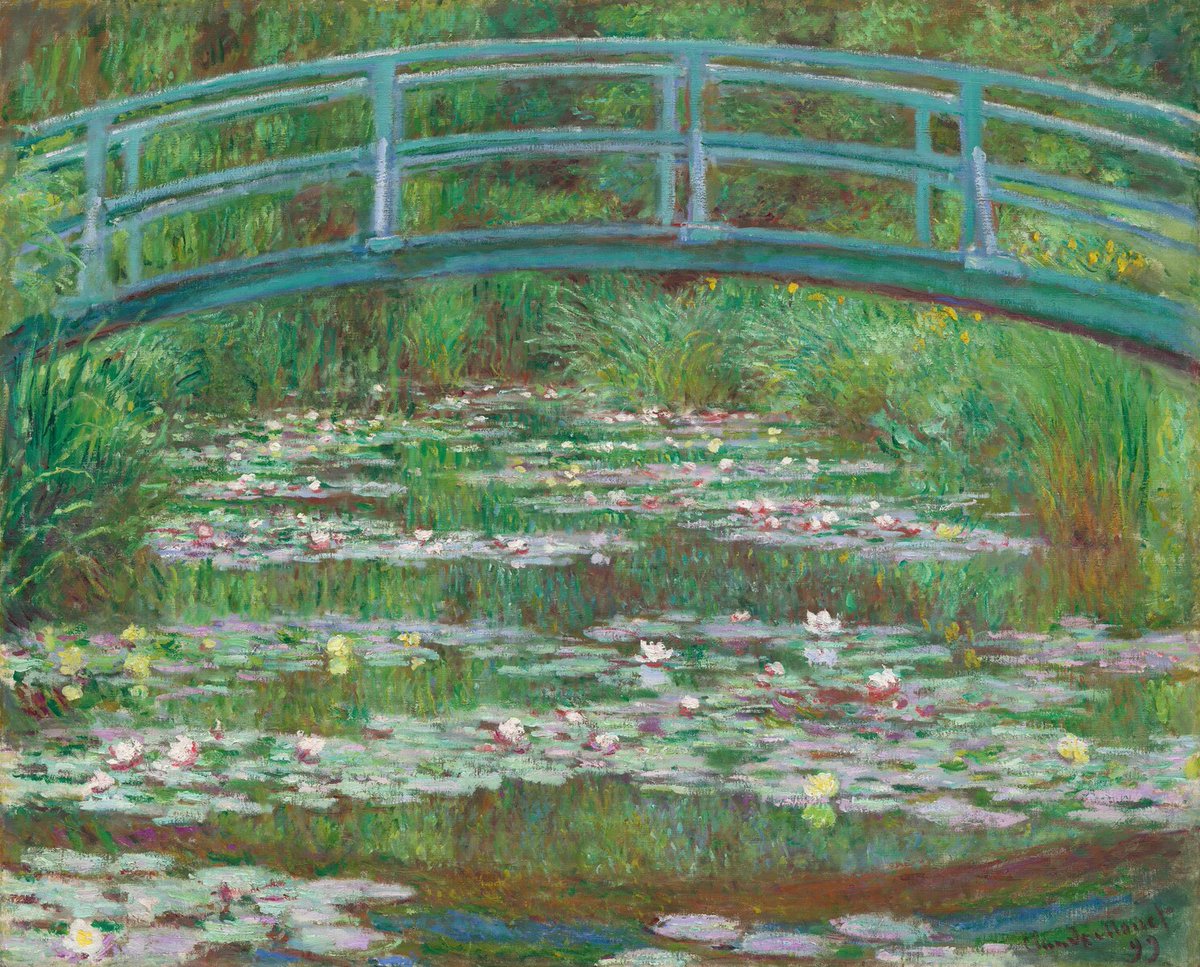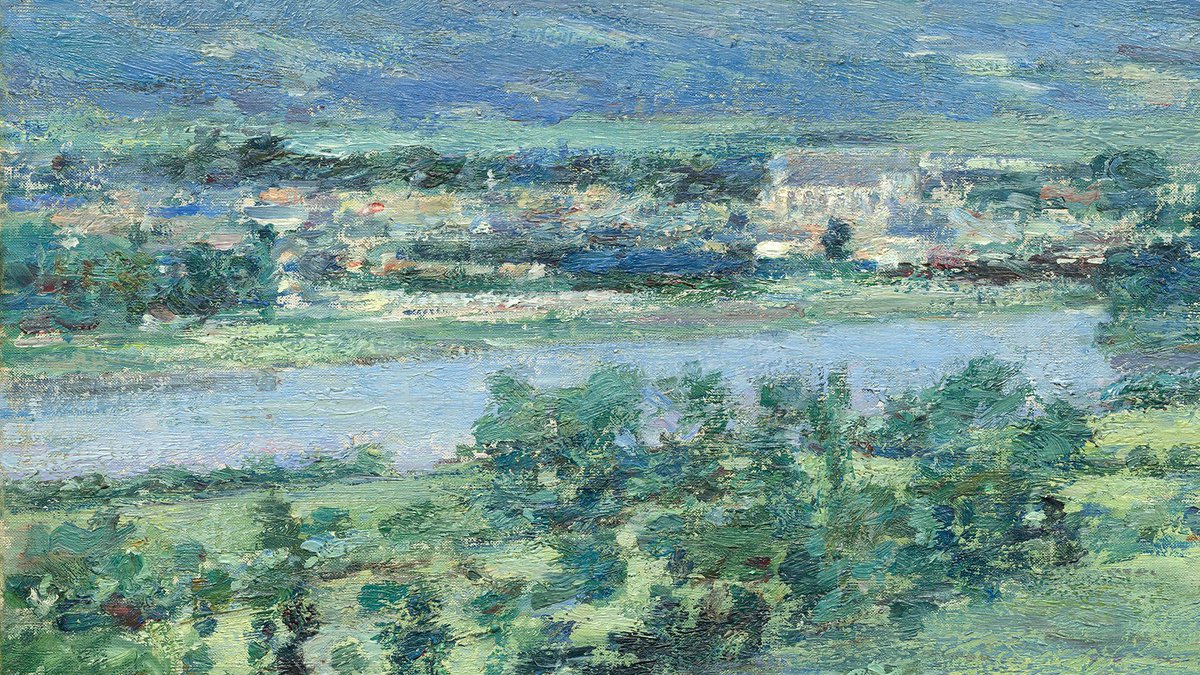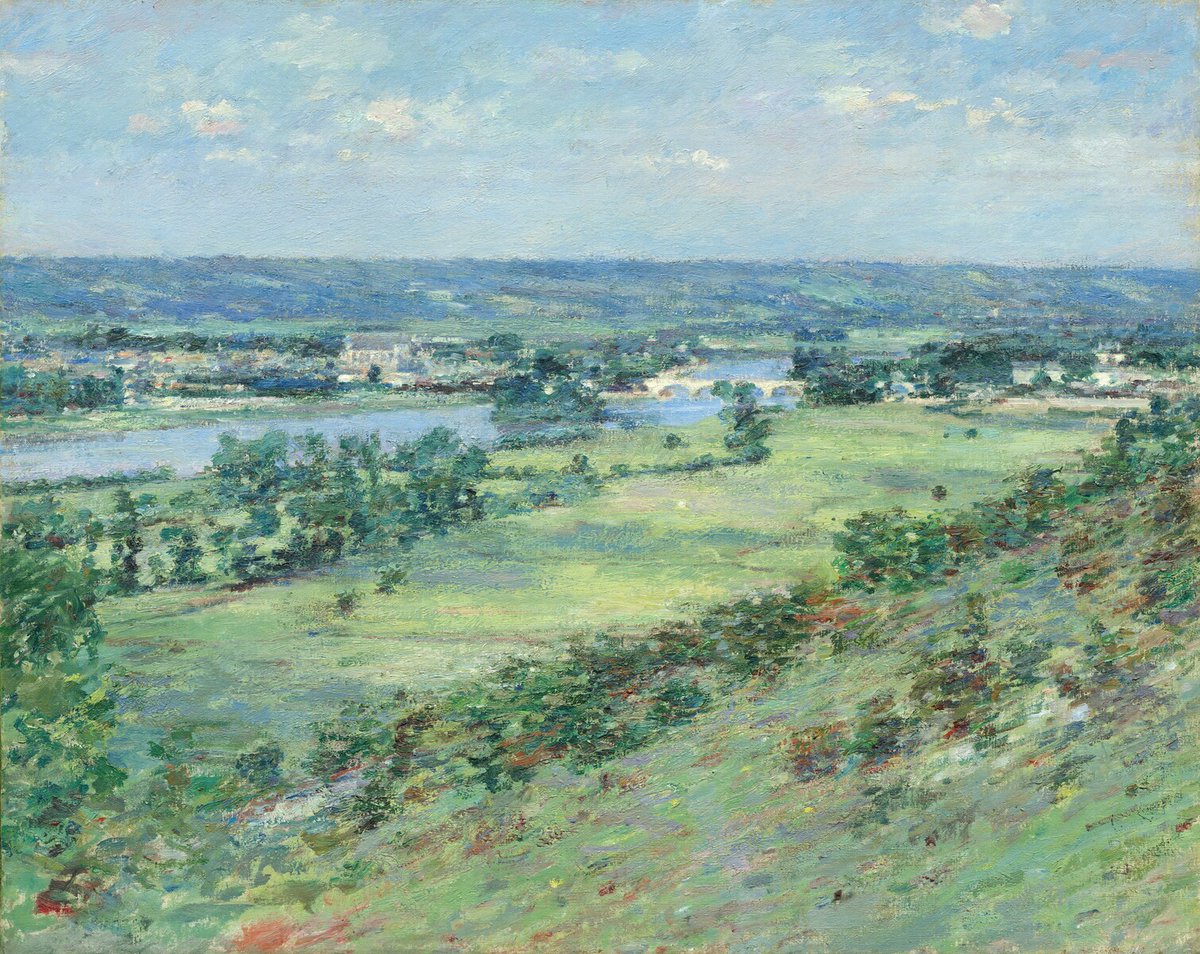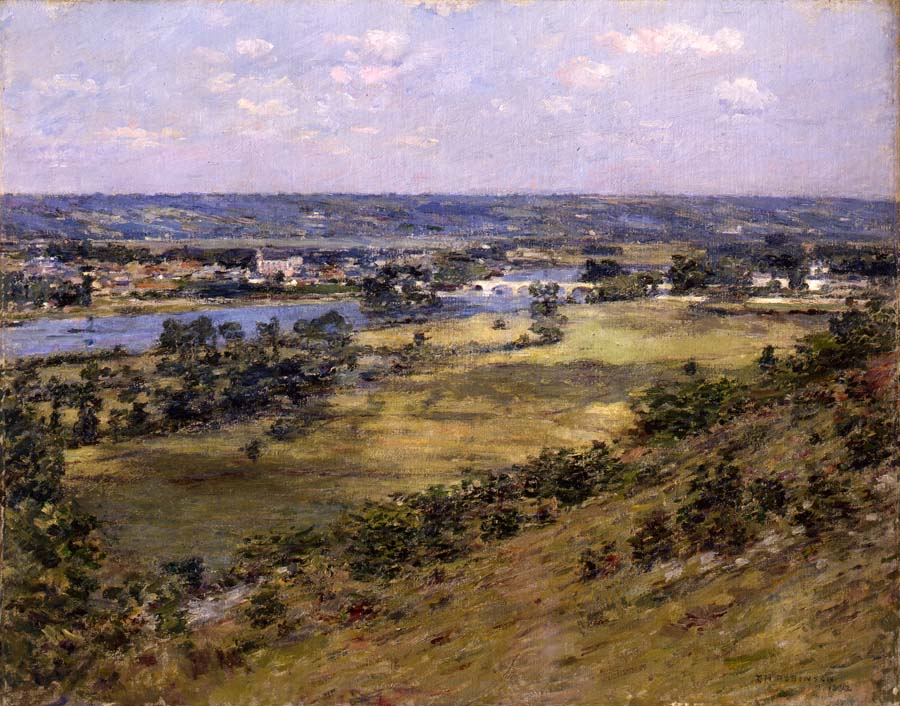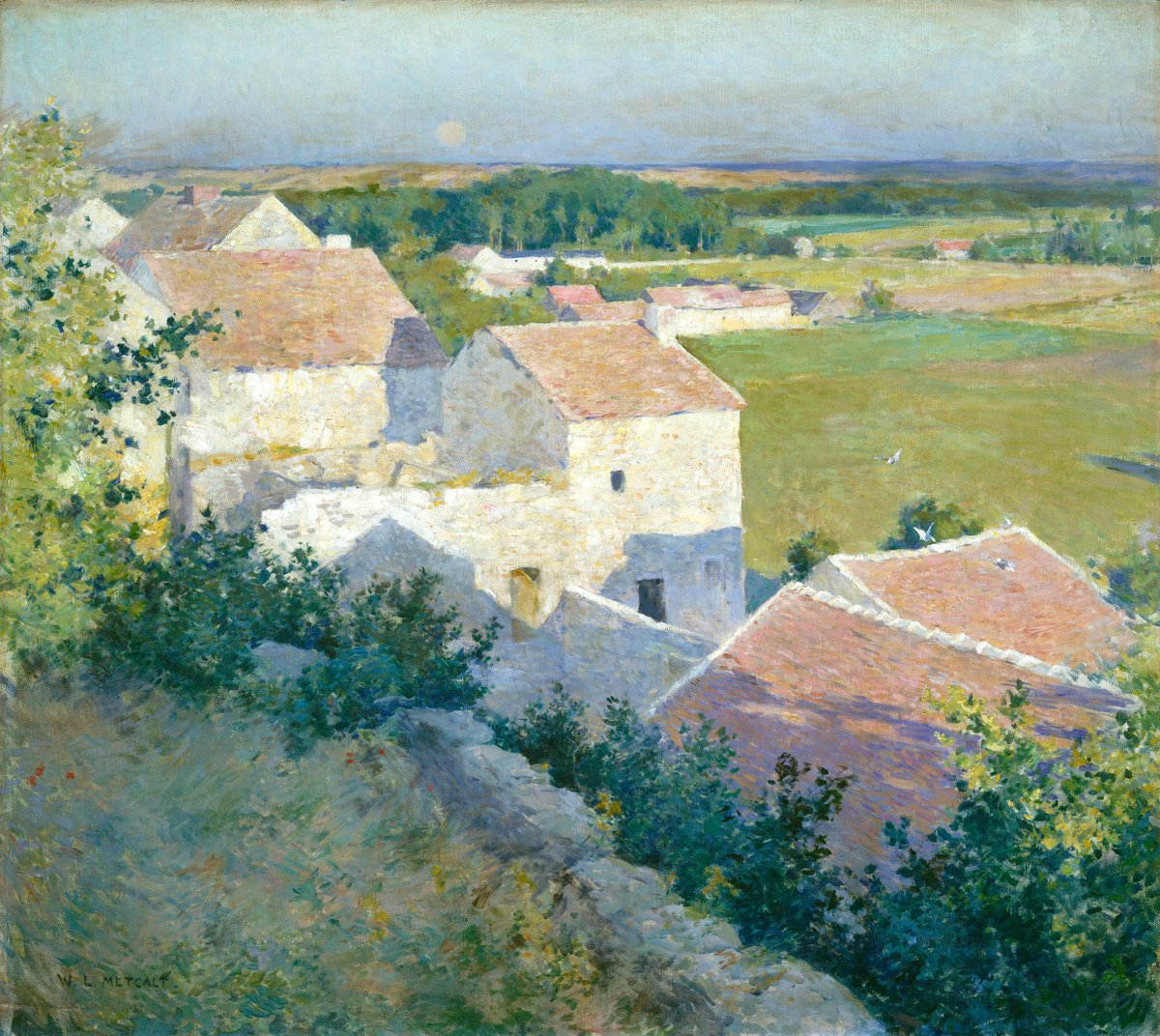For today’s tour, we’re returning to gallery 70 on the Main Floor to look at American paintings from the second half of the 19th and early 20th century. #MuseumFromHome
See a list of the works: http://go.usa.gov/xv8ae ">https://go.usa.gov/xv8ae&quo...
See a list of the works: http://go.usa.gov/xv8ae ">https://go.usa.gov/xv8ae&quo...
ICYMI, here is our tour from last week of the works by John Singer Sargent in gallery 70: https://twitter.com/ngadc/status/1247627043774377986">https://twitter.com/ngadc/sta...
Our tour today is led (from home) by Catherine Southwick, curatorial associate in the Gallery’s department of American and British paintings.
Sargent’s contemporaries John La Farge, Abbott Handerson Thayer, Childe Hassam, and Theodore Robinson were inspired by the Impressionists to depict landscapes and still lifes while embracing the use of natural light, rapid brushwork, and a bright palette.
John La Farge started his career as a lawyer in New York, making art on the side as a pastime. An extended stay in Europe, where he studied art and made copies after the Old Masters, changed his direction.
[John La Farge, “Portrait of the Painter,” 1859, @MetMuseum]
[John La Farge, “Portrait of the Painter,” 1859, @MetMuseum]
Though La Farge briefly resumed his law practice when he returned to the US, he soon left to study with William Morris Hunt in Rhode Island.
He made “Flowers on a Window Ledge” two years later, in 1861, when he felt he had exhausted all he had to learn from his teacher.
He made “Flowers on a Window Ledge” two years later, in 1861, when he felt he had exhausted all he had to learn from his teacher.
“Flowers on a Window Ledge” is a study in light and color.
Instead of painting the flowers in meticulous scientific detail, La Farge captured the color of the flowers at peak bloom and experimented with depicting indoor and outdoor light hitting the white curtain.
Instead of painting the flowers in meticulous scientific detail, La Farge captured the color of the flowers at peak bloom and experimented with depicting indoor and outdoor light hitting the white curtain.
La Farge used soft, loose brushwork to create delicate passages of color—like the spot of light with a hint of pink under the bowl, or the peach and green-grey sunlight on the curtain.
Critics at that time saw a link between La Farge& #39;s recent marriage to Margaret Mason Perry and the painting.
One wrote that La Farge& #39;s flowers were "burning with love, beauty, and sympathy...their language is of the heart, and they talk to us of human love."
One wrote that La Farge& #39;s flowers were "burning with love, beauty, and sympathy...their language is of the heart, and they talk to us of human love."
Next, we’ll move to Abbott Handerson Thayer’s view of a place that he also knew very well, Mount Monadnock, which could be seen from his home in Dublin, New Hampshire.
He drew artistic inspiration and personal solace from “this dear mountain,” as Thayer called it.
He painted its snowcapped peak many times, occasionally waking his entire family before dawn to watch the first rays of sunlight strike the summit.
He painted its snowcapped peak many times, occasionally waking his entire family before dawn to watch the first rays of sunlight strike the summit.
The mountain’s peak, lit by the sun, is the painting’s focal point. The foreground is obscured by purple-tinged shadow over a line of spruce trees and a snowbank.
Do you find this scene hopeful or foreboding?
Do you find this scene hopeful or foreboding?
The mountain had been a favorite of transcendentalist poets and philosophers a generation earlier, like Henry David Thoreau and Ralph Waldo Emerson. Thayer was an admirer of both Thoreau and Emerson.
An excerpt from Ralph Waldo Emerson’s 1846 poem, “Monadnoc:”
Many feet in summer seek
Betimes my far-appearing peak;
In the dreaded winter-time,
None save dappling shadows climb
Under clouds my lonely head,
Old as the sun, old almost as the shade.
Many feet in summer seek
Betimes my far-appearing peak;
In the dreaded winter-time,
None save dappling shadows climb
Under clouds my lonely head,
Old as the sun, old almost as the shade.
You can see an earlier painting by Thayer of Mount Monadnock across the National Mall at the @FreerSackler: http://s.si.edu/2yeU9lg ">https://s.si.edu/2yeU9lg&q...
The Gallery’s painting may have originally been a study for that work that Thayer continued to refine for several years.
The Gallery’s painting may have originally been a study for that work that Thayer continued to refine for several years.
From a mountain view to an oceanside scene, we turn now to Childe Hassam’s “Poppies, Isles of Shoals.”
Childe Hassam was a regular visitor to the Isles of Shoals, nine small, rocky islands off the New Hampshire and Maine coasts.
Childe Hassam was a regular visitor to the Isles of Shoals, nine small, rocky islands off the New Hampshire and Maine coasts.
His friend, poet Celia Thaxter, had a home on Appledore Island where writers, visual artists, and musicians gathered in the summers. Between 1890–1894 Hassam painted many works set in or nearby her famous flower garden.
[Celia Thaxter, @NYPL; Childe Hassam, @LibraryofCongress]
[Celia Thaxter, @NYPL; Childe Hassam, @LibraryofCongress]
This photo shows the house some time between 1895 and 1910.
[Appledore, Celia Thaxter& #39;s cottage, Isles of Shoals, N.H. (i.e. Maine)] via @LibraryofCongress
[Appledore, Celia Thaxter& #39;s cottage, Isles of Shoals, N.H. (i.e. Maine)] via @LibraryofCongress
You can visit Thaxter& #39;s reconstructed garden, now cared for by the @shoalsmarinelab. Read more about it: http://bit.ly/2RGA6TQ
Associate">https://bit.ly/2RGA6TQ&q... curator Sarah Cash visited Appledore Island in 2016 and took this photograph that approximates Hassam’s viewpoint from the garden.
Associate">https://bit.ly/2RGA6TQ&q... curator Sarah Cash visited Appledore Island in 2016 and took this photograph that approximates Hassam’s viewpoint from the garden.
“Poppies, Isles of Shoals” (1891) presents a broad vista moving from a dense foreground of flowers to a background of rocks, water, and sky. This view, centered on an outcropping called Babb& #39;s Rock, was one of Hassam& #39;s favorites.
The island was not as deserted and undeveloped as Hassam suggests in his paintings, but he chose to exclude signs of human presence other than the passing sailboat.
The composition is divided into three bands of space, each with distinct colors:
–Green and red for the flowers
–Blue, purple, and white for the rocks and water
–Pale blue for the sky
–Green and red for the flowers
–Blue, purple, and white for the rocks and water
–Pale blue for the sky
Hassam& #39;s brushwork is equally varied, ranging from lush red and white strokes defining the flowers to long drags of pigment suggesting the multihued surfaces of the rocks.
One reviewer wrote that seeing Hassam’s Isles of Shoals paintings was “like taking off a pair of black spectacles that one has been compelled to wear out of doors, and letting the full glory of nature& #39;s sunlight color pour in upon the retina.”
For our last painting today, we leave the Isle of Shoals for Giverny.
This sunlit landscape is set in town, located 45 miles northwest of Paris. Theodore Robinson was a frequent visitor to Giverny and befriended one of the town’s most famous residents, Claude Monet.
This sunlit landscape is set in town, located 45 miles northwest of Paris. Theodore Robinson was a frequent visitor to Giverny and befriended one of the town’s most famous residents, Claude Monet.
Over their years of friendship, Monet inspired Robinson to lighten his palette and to relax the polished painting techniques from his academic training. Influenced by Monet, Robinson began to create multiple works of the same subject under different effects of light and weather.
“The Valley of the Seine, from the Hills of Giverny” is one of three paintings Robinson made of this view in the summer of 1892.
To capture the play of sunlight and clouds on the meadows, Robinson alternated working on the three canvases as weather conditions shifted.
To capture the play of sunlight and clouds on the meadows, Robinson alternated working on the three canvases as weather conditions shifted.
It was arduous work to bring several canvases and supplies up to his chosen vantage point, as the artist reported, “Am afraid I am losing time on my vues—they are perhaps too large for me—or I get tired carrying my stuff so far.”
The Gallery’s painting depicts the sunniest of the scenes. The two other paintings are in the collections of @AddisonArt (pictured) and @MaierMuseum.
Thanks for following along on today’s tour of gallery 70!
And for today’s #MuseumMomentofZen, Willard Leroy Metcalf’s “Midsummer Twilight” from c. 1890.
And for today’s #MuseumMomentofZen, Willard Leroy Metcalf’s “Midsummer Twilight” from c. 1890.

 Read on Twitter
Read on Twitter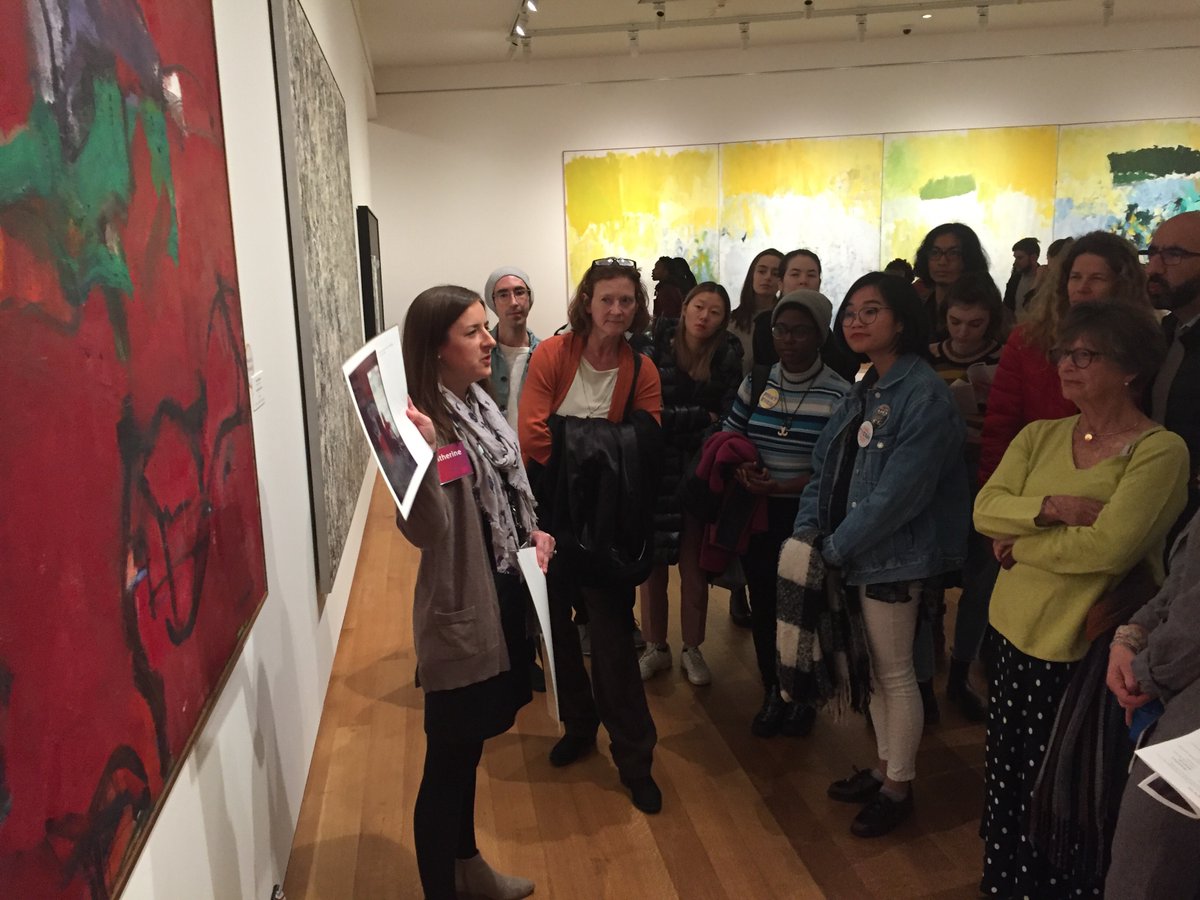
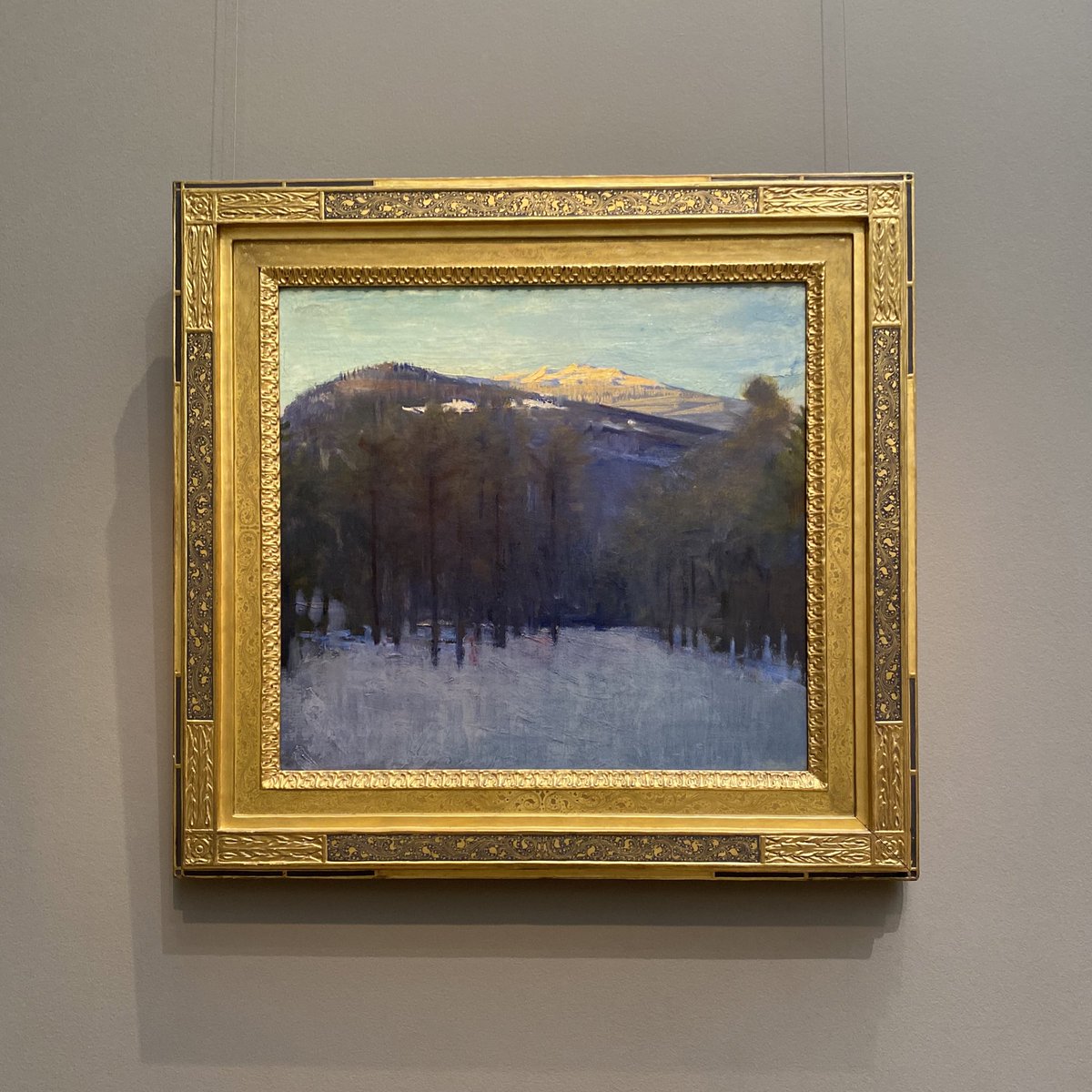
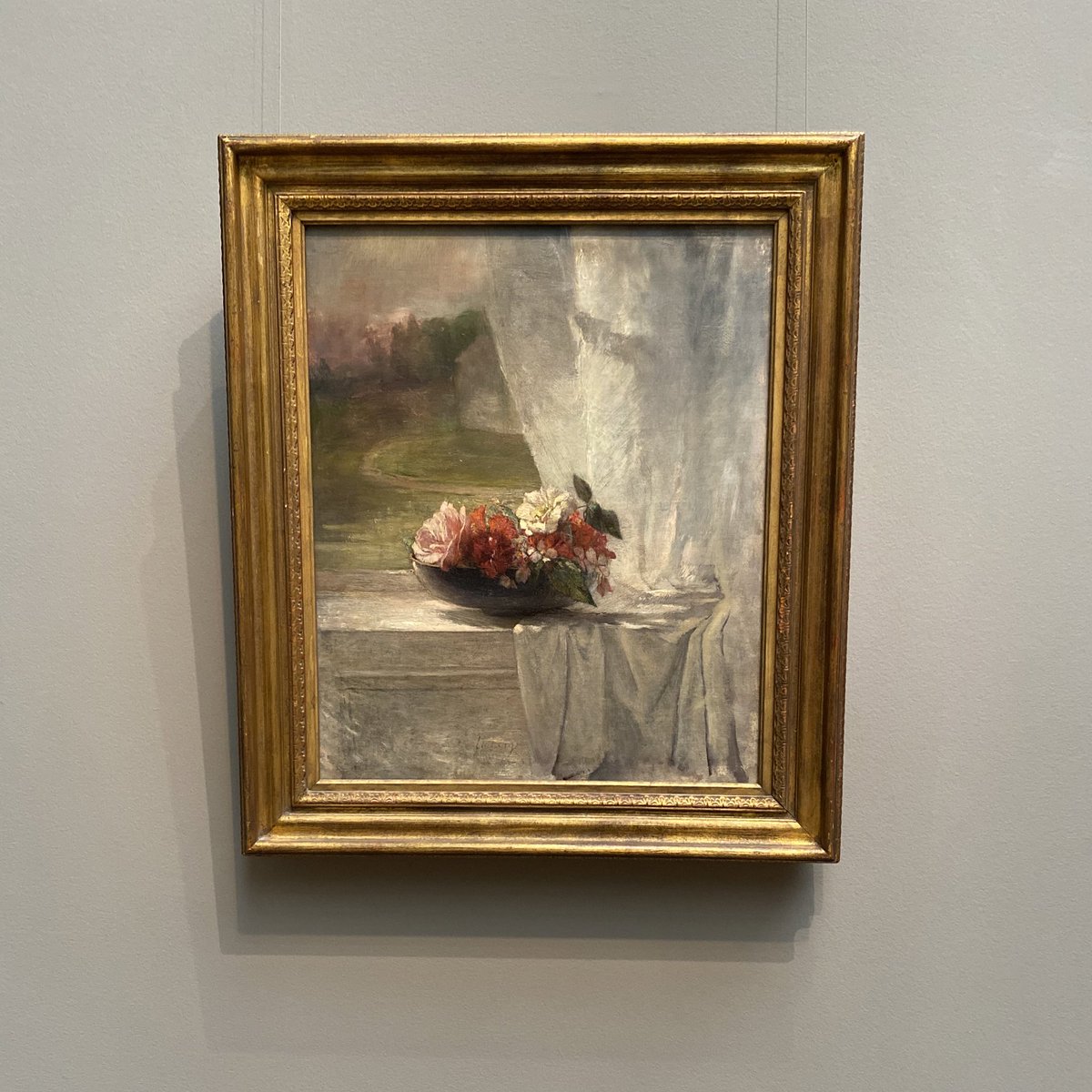
![John La Farge started his career as a lawyer in New York, making art on the side as a pastime. An extended stay in Europe, where he studied art and made copies after the Old Masters, changed his direction. [John La Farge, “Portrait of the Painter,” 1859, @MetMuseum] John La Farge started his career as a lawyer in New York, making art on the side as a pastime. An extended stay in Europe, where he studied art and made copies after the Old Masters, changed his direction. [John La Farge, “Portrait of the Painter,” 1859, @MetMuseum]](https://pbs.twimg.com/media/EVrJwmGXsAYT4j0.jpg)
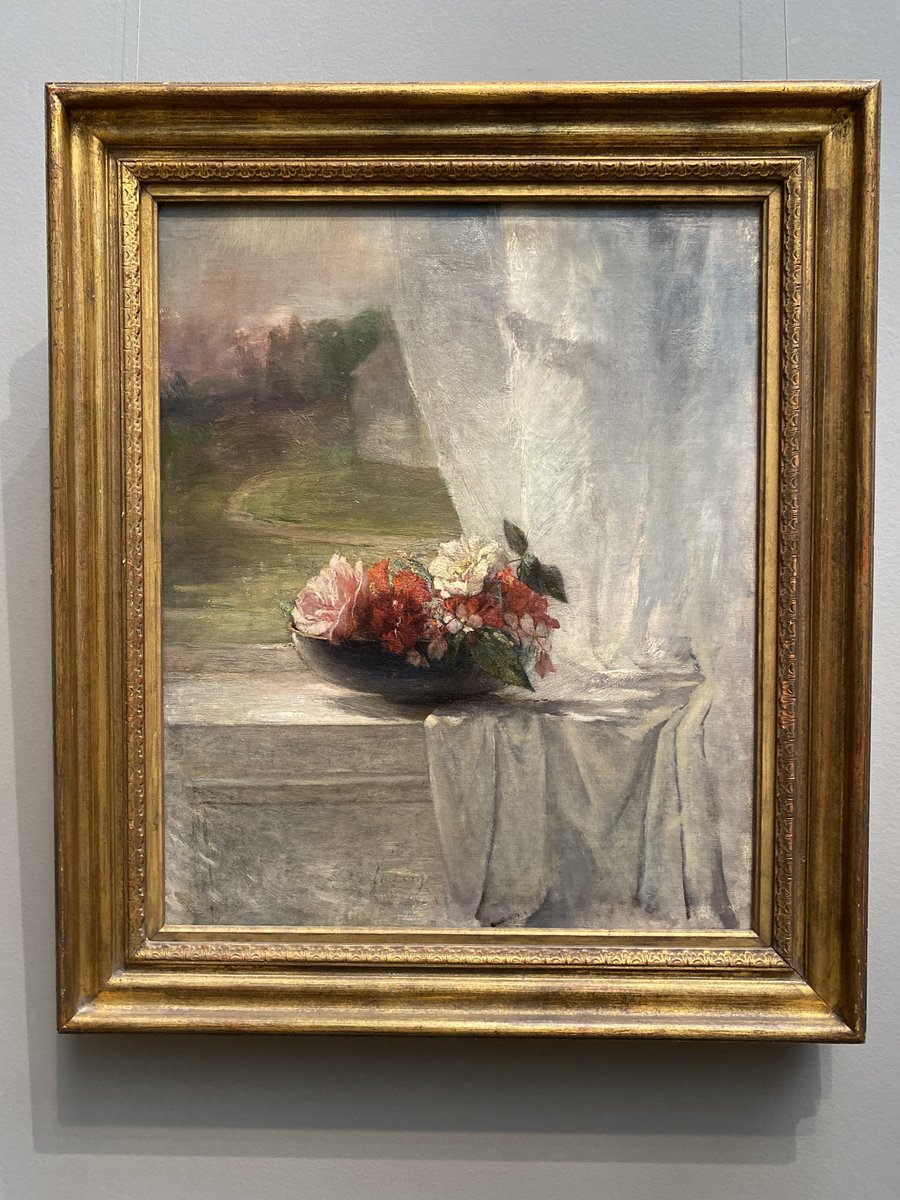

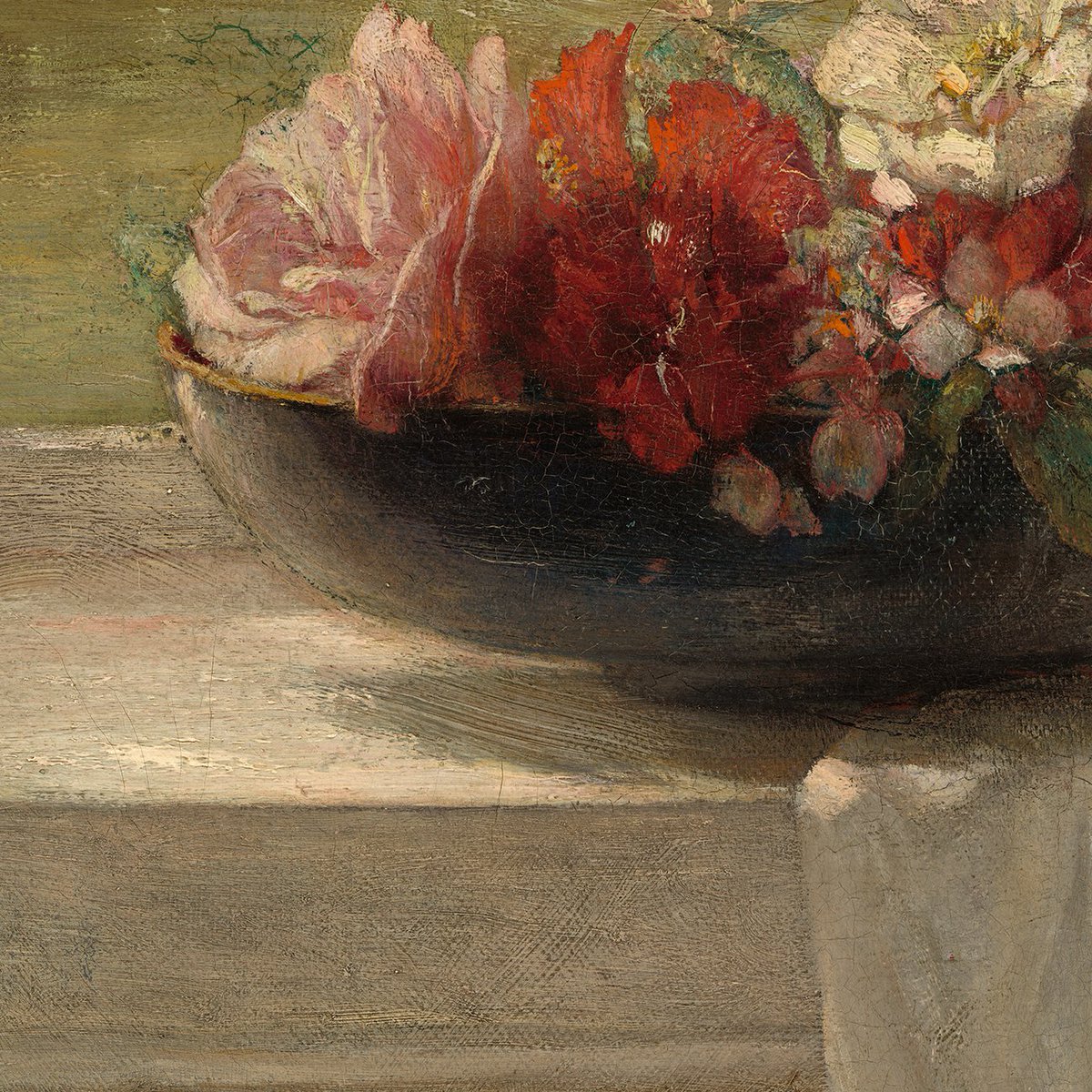
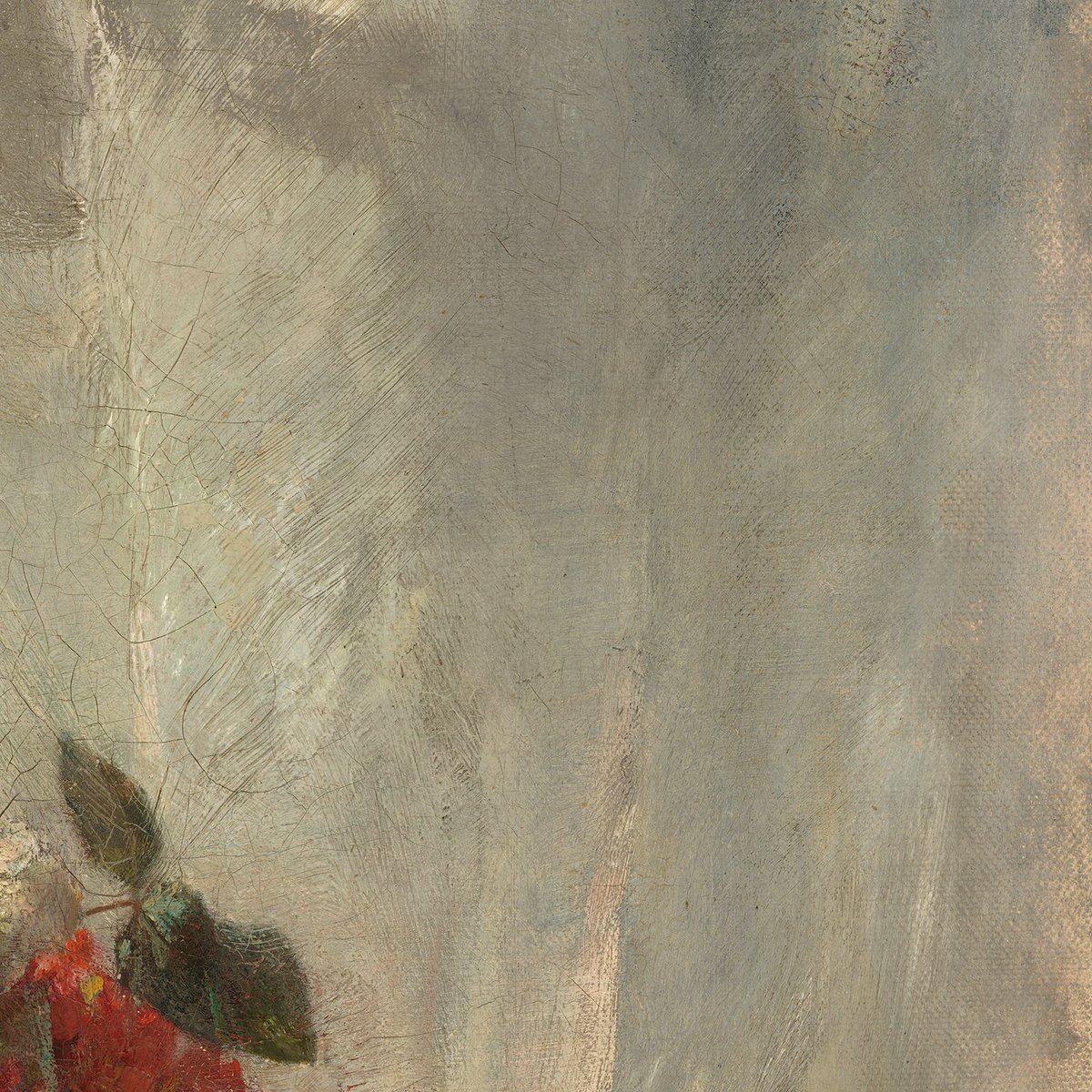
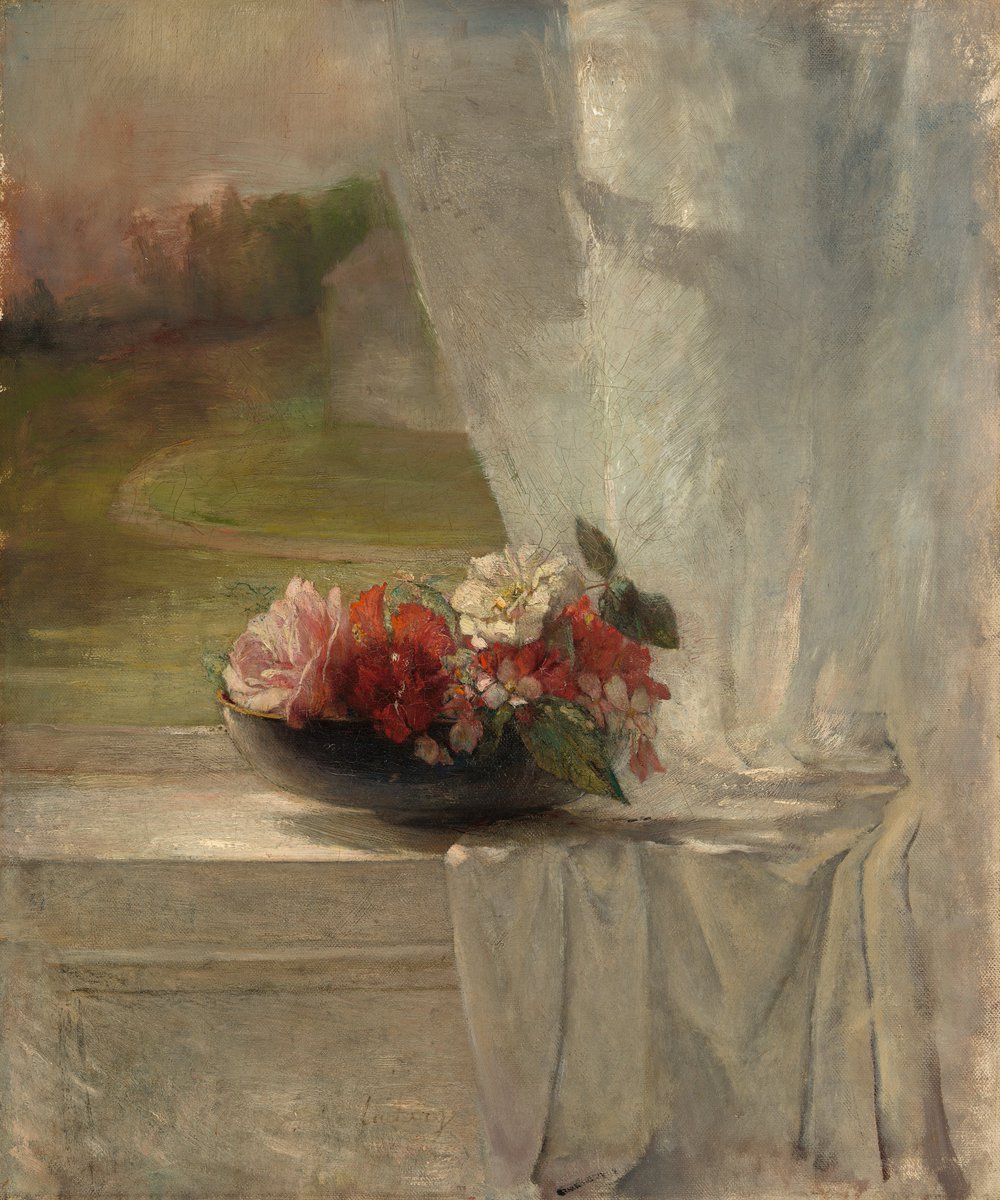
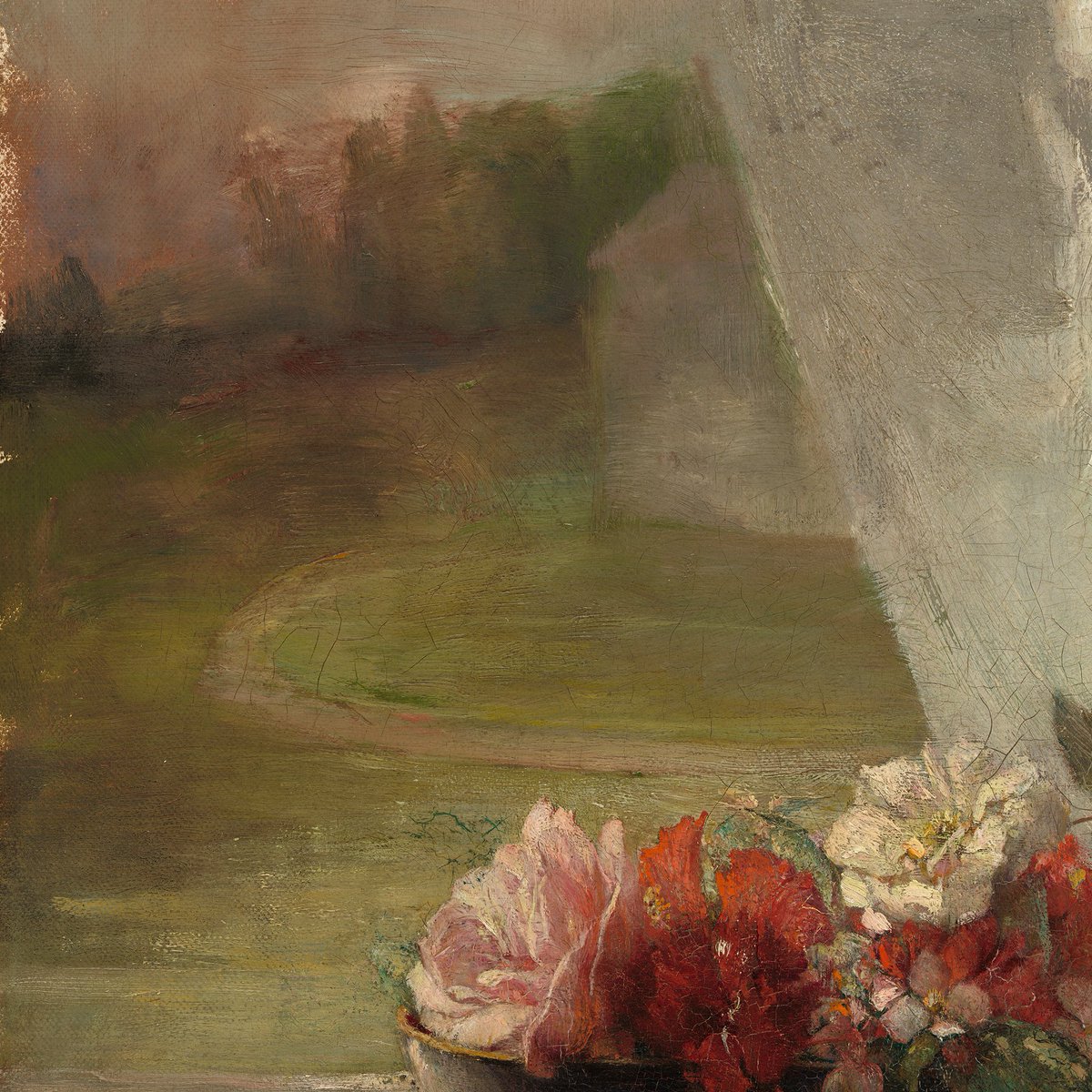
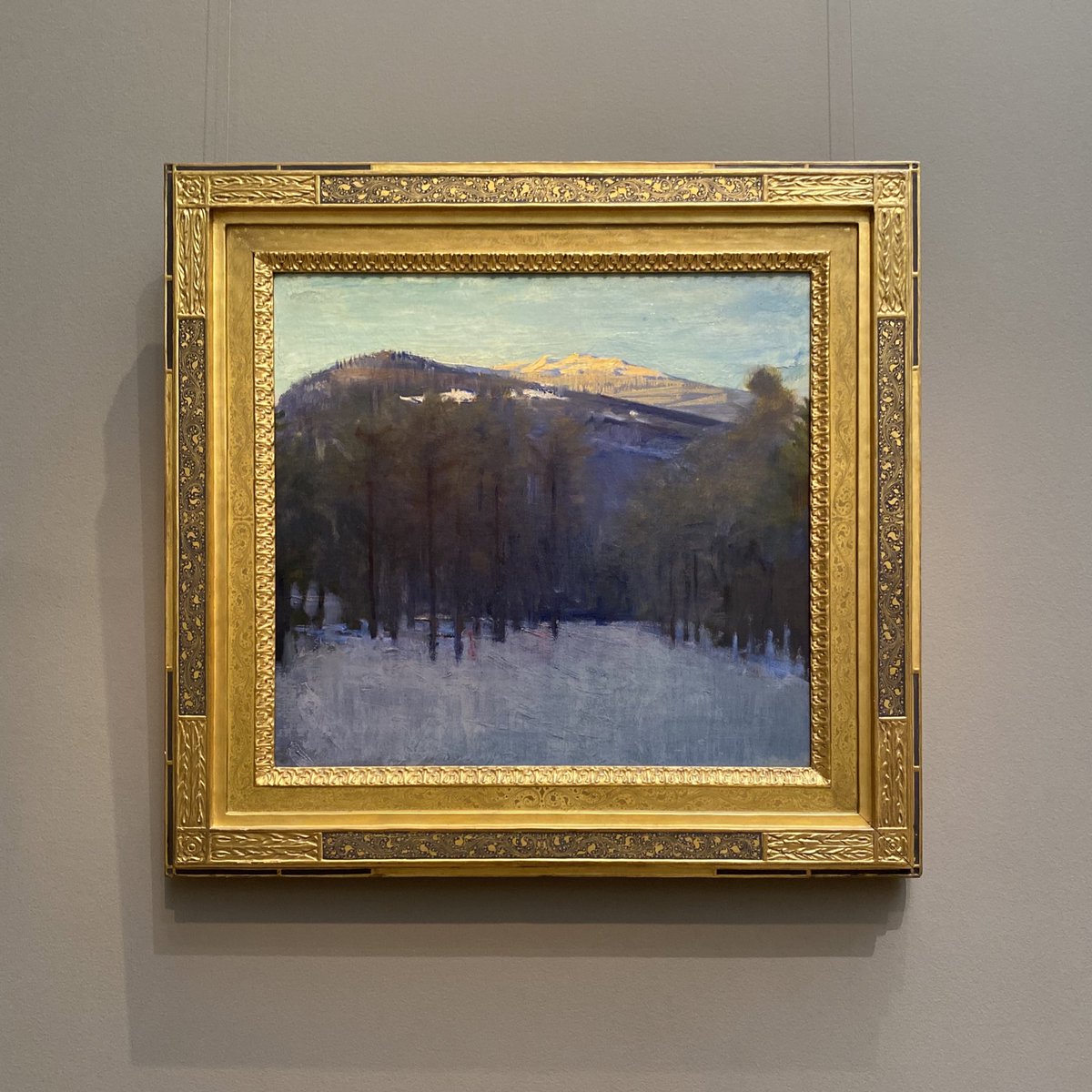
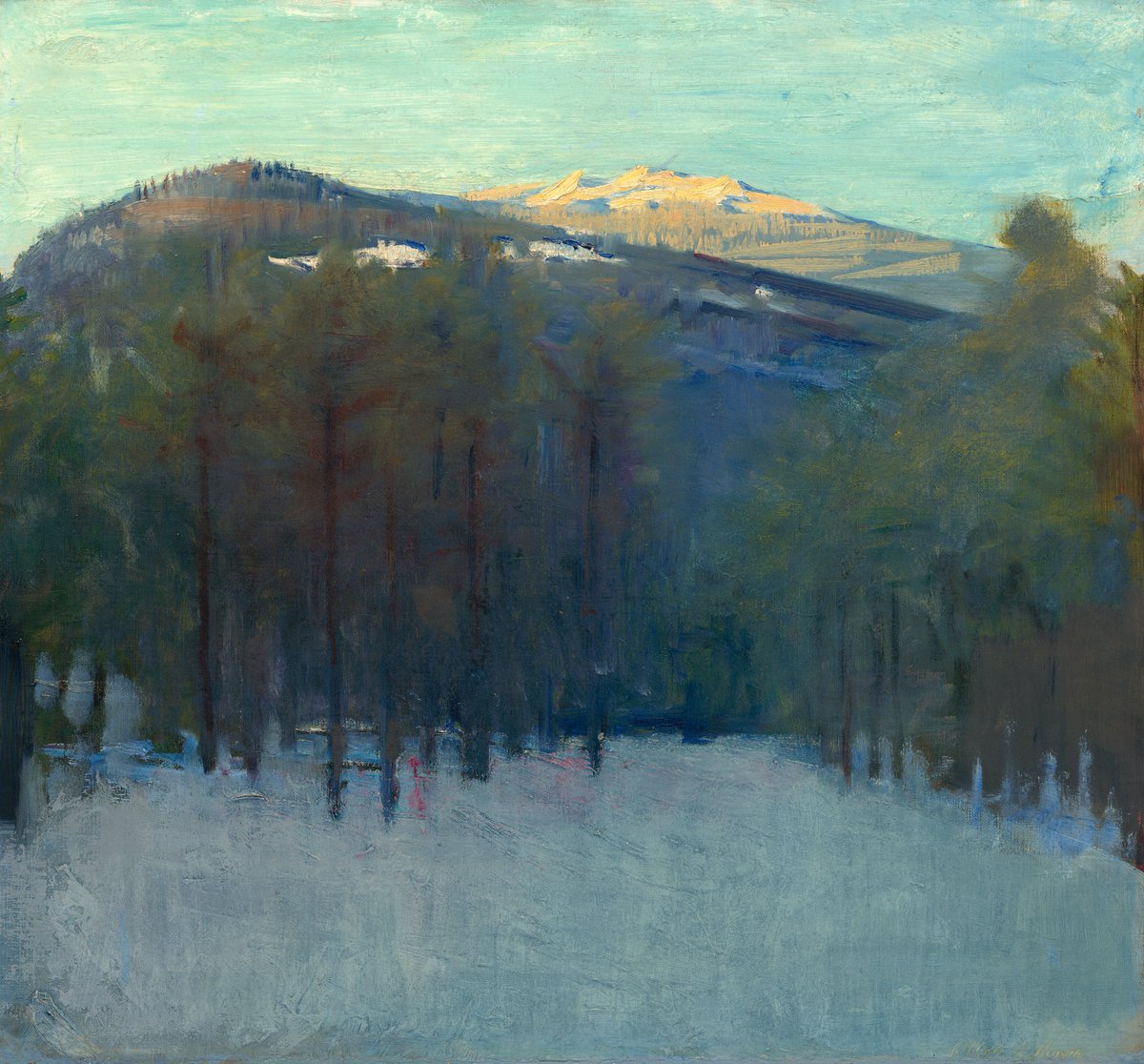
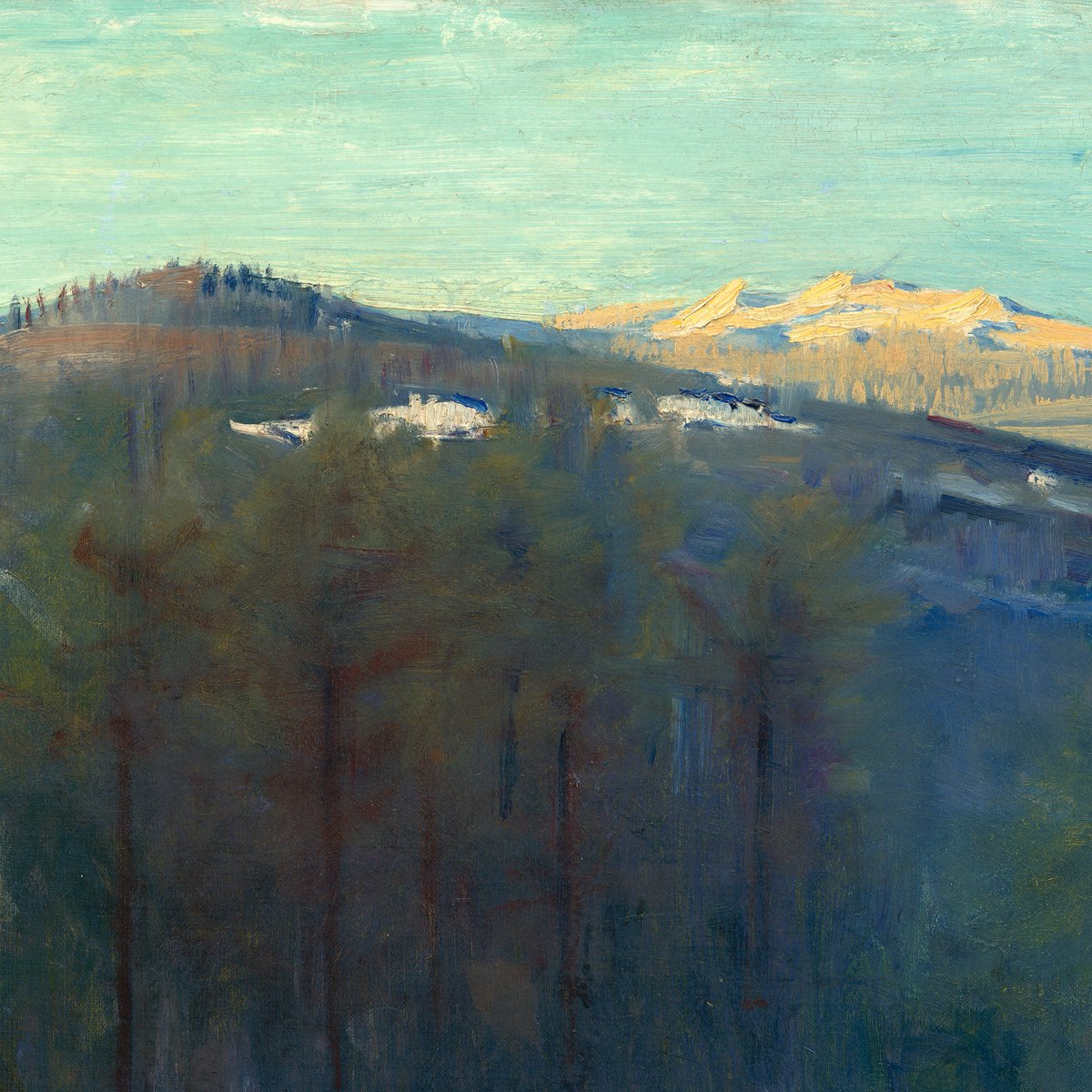
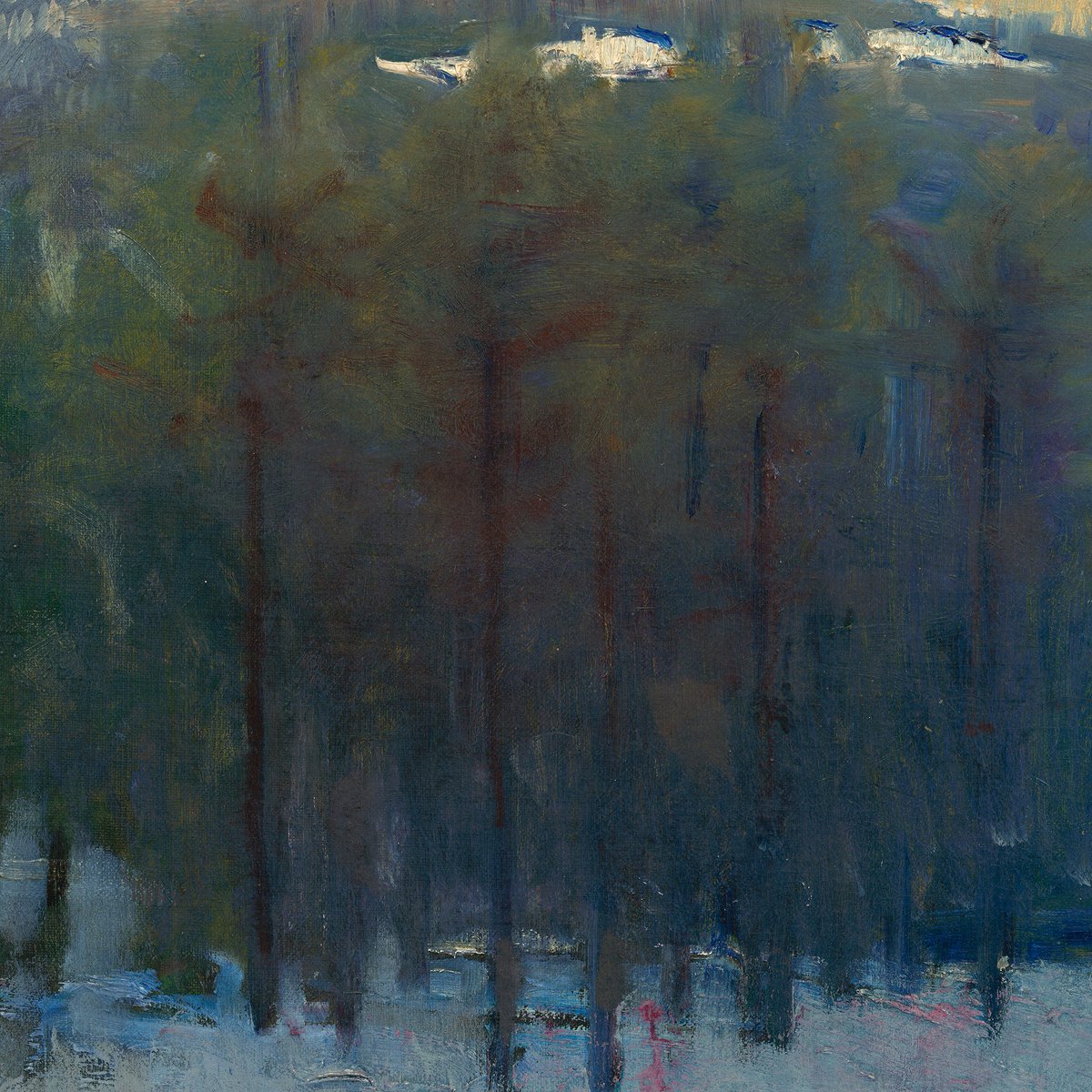
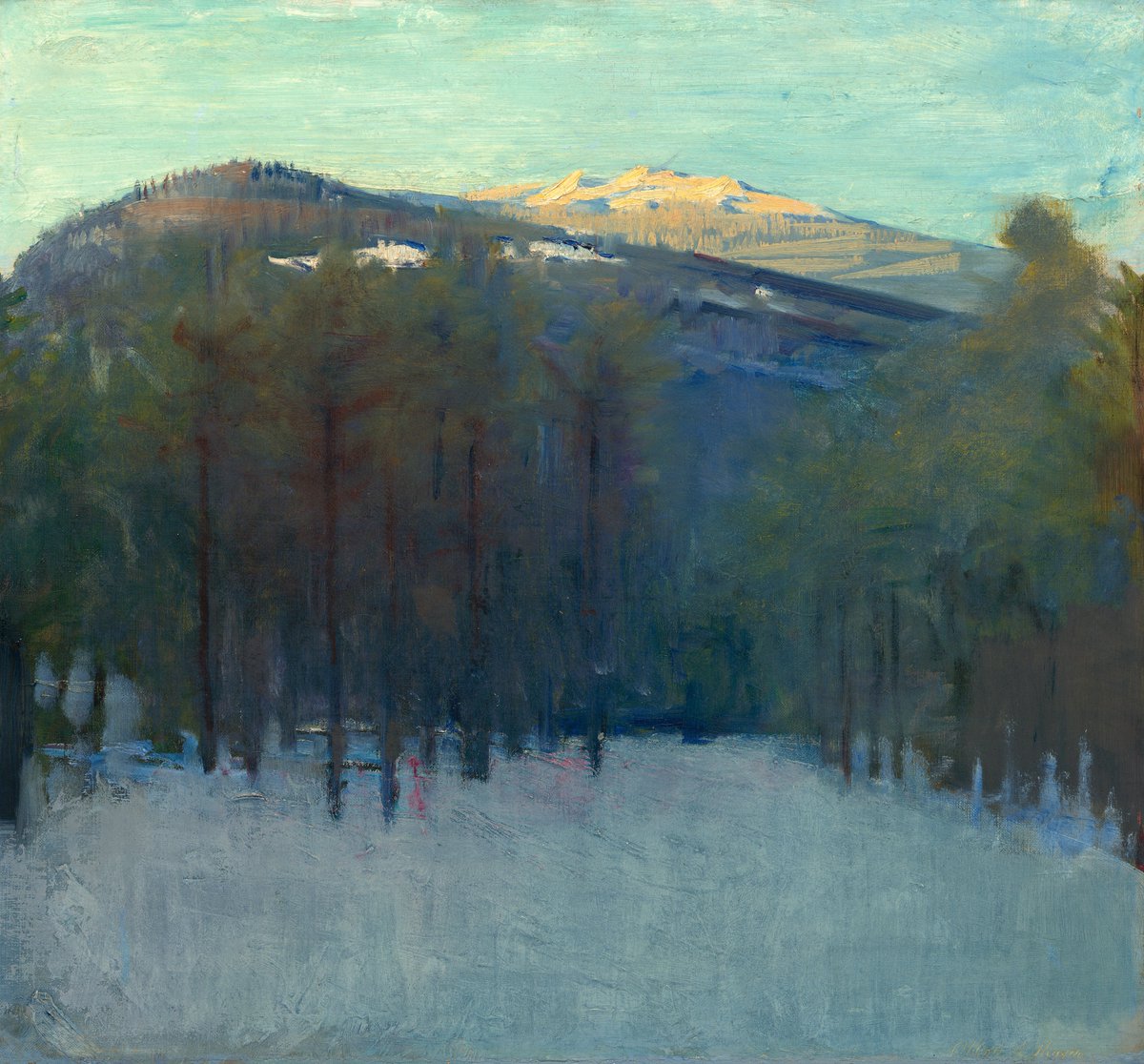
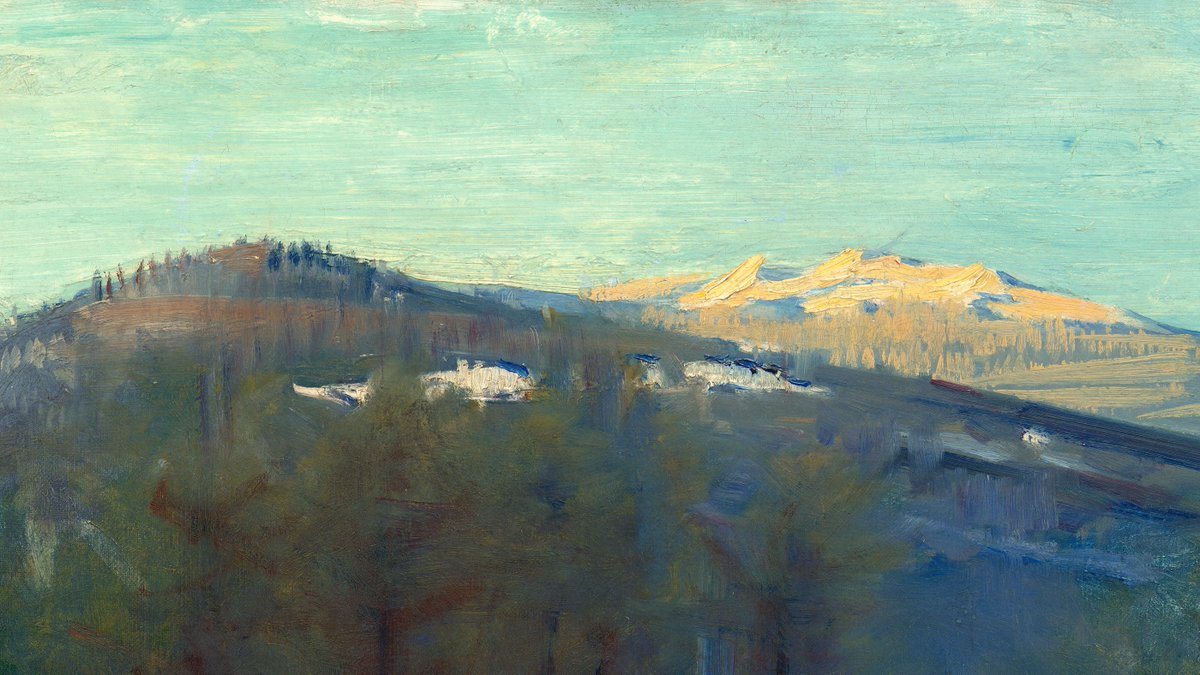
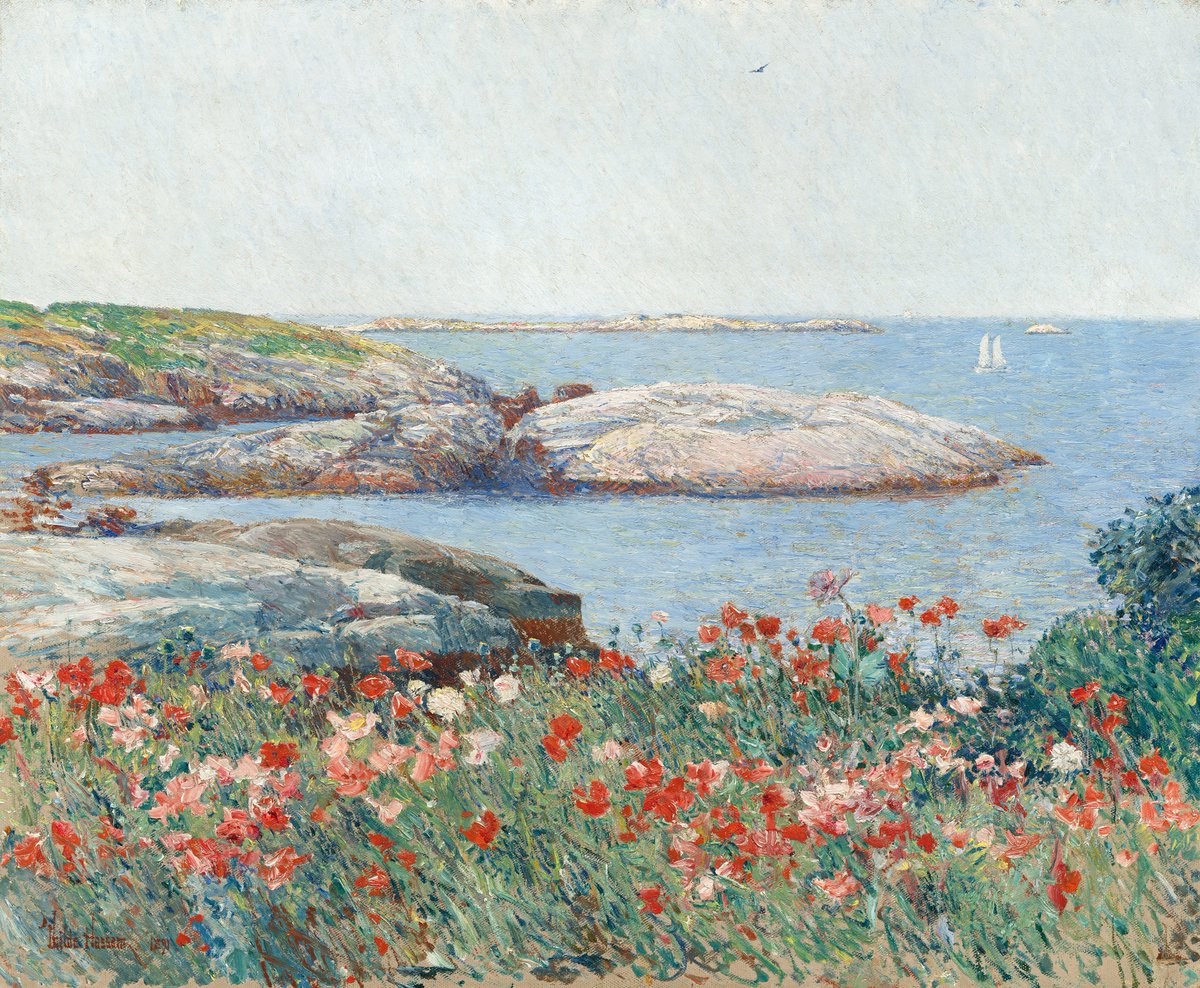
![His friend, poet Celia Thaxter, had a home on Appledore Island where writers, visual artists, and musicians gathered in the summers. Between 1890–1894 Hassam painted many works set in or nearby her famous flower garden. [Celia Thaxter, @NYPL; Childe Hassam, @LibraryofCongress] His friend, poet Celia Thaxter, had a home on Appledore Island where writers, visual artists, and musicians gathered in the summers. Between 1890–1894 Hassam painted many works set in or nearby her famous flower garden. [Celia Thaxter, @NYPL; Childe Hassam, @LibraryofCongress]](https://pbs.twimg.com/media/EVrRPtMX0AMBIhb.jpg)
![His friend, poet Celia Thaxter, had a home on Appledore Island where writers, visual artists, and musicians gathered in the summers. Between 1890–1894 Hassam painted many works set in or nearby her famous flower garden. [Celia Thaxter, @NYPL; Childe Hassam, @LibraryofCongress] His friend, poet Celia Thaxter, had a home on Appledore Island where writers, visual artists, and musicians gathered in the summers. Between 1890–1894 Hassam painted many works set in or nearby her famous flower garden. [Celia Thaxter, @NYPL; Childe Hassam, @LibraryofCongress]](https://pbs.twimg.com/media/EVrRfHWXQAAansD.jpg)
![This photo shows the house some time between 1895 and 1910.[Appledore, Celia Thaxter& #39;s cottage, Isles of Shoals, N.H. (i.e. Maine)] via @LibraryofCongress This photo shows the house some time between 1895 and 1910.[Appledore, Celia Thaxter& #39;s cottage, Isles of Shoals, N.H. (i.e. Maine)] via @LibraryofCongress](https://pbs.twimg.com/media/EVrR48XXkAAKhYx.jpg)

